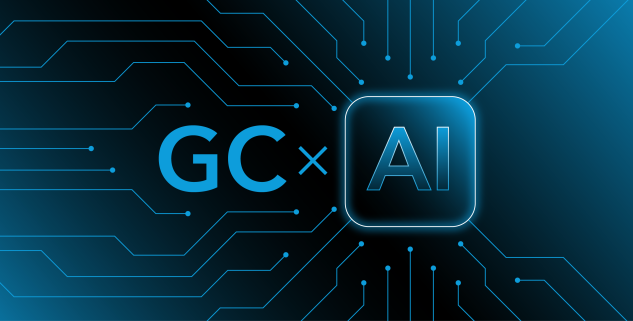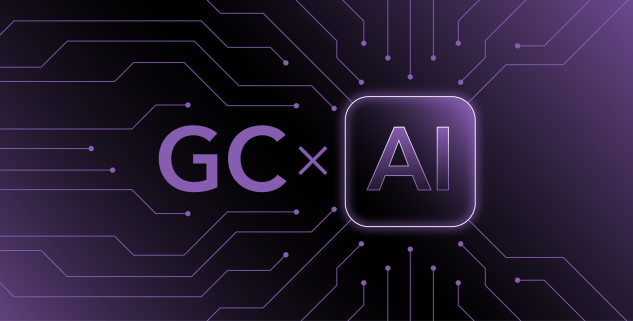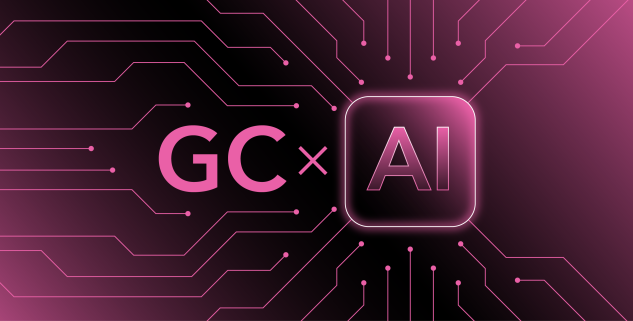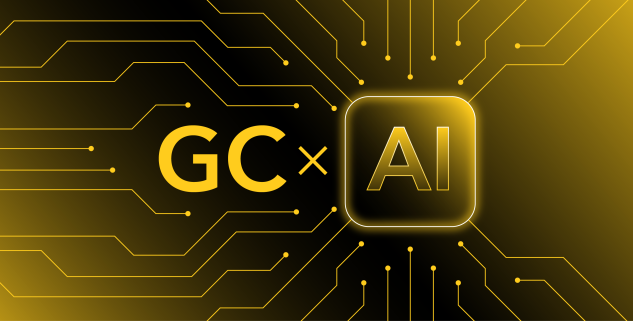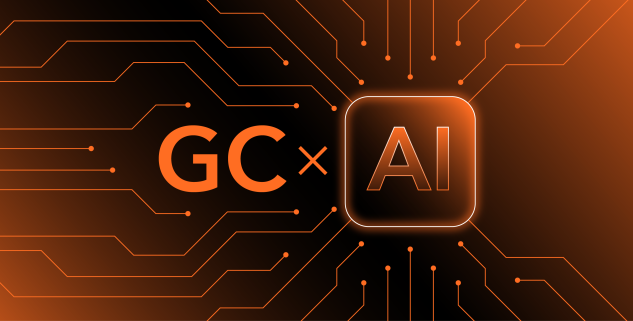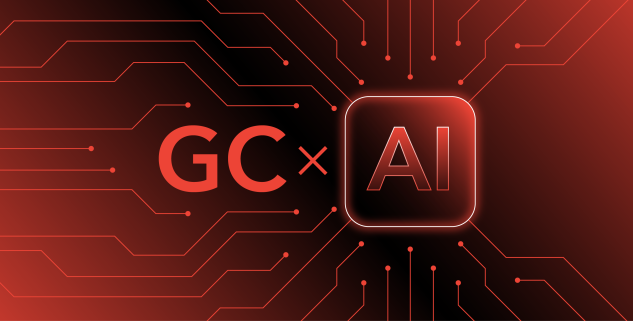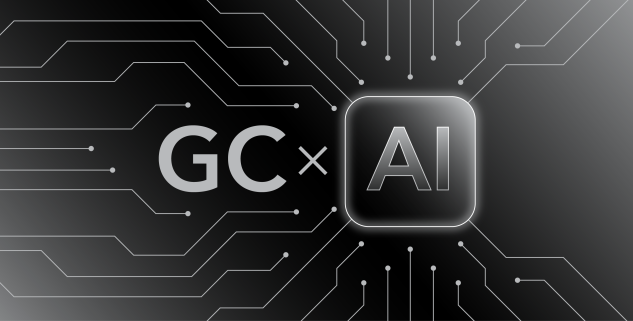AI is reshaping internal operations, external partnerships, and the very skills that define a modern legal department. Chief legal officers stand at the intersection of all these forces—making AI not only a technological catalyst, but equally a test of leadership.
The challenge is compounded by the reality that AI doesn’t merely optimize existing workflows—it potentially blurs the boundaries of legal judgment itself. Where does the machine’s pattern recognition end and the lawyer’s strategic counsel begin? What does accountability look like when algorithms inform decisions that carry reputational or regulatory consequences? What were once abstract questions for the future are now the ones that greet us Monday morning.
In many conversations about AI among lawyers, legal ops professionals, and technologists, the focus remains narrowly framed around productivity and cost savings. This misses the deeper imperative to define how legal can help the business adapt, compete, and thrive—all while complexity is accelerating.
This series has examined how AI enables a fundamental evolution spanning the full arc of the general counsel’s role, in-house operations, and the legal profession. Across multiple dimensions, a single conclusion emerges: This is a redefinition of what it means to build a modern legal function.
The strategic transformation of legal’s role in the age of AI will turn on three key elements:
- How AI preserves and operationalizes institutional knowledge within legal teams
- How it reshapes the lateral talent market that heavily influences law firm economics and outside counsel hiring
- How it positions general counsel as architects of the legal profession’s future rather than passive consumers of legal services
Beyond the Indispensable Expert
For many general counsel, a persistent fear is that a key team member will leave—and take with them years of accumulated institutional knowledge about critical processes, regulatory nuances, or company-specific risk tolerances and strategies. A departure can impair operations, delay deal execution, or create sudden compliance vulnerabilities.
Accumulated intelligence tools will buffer this risk. For legal teams these tools, which Bessemer Partners recently identified as the emerging AI product differentiator, will create an institutional intelligence that allows in-house teams to retain their own body of knowledge.
The impact of these tools goes well beyond the now workaday benefits of a shared drive and collective document access. These augmented systems synthesize patterns from every contract negotiation, redline decision, and strategic judgment a team makes. They don’t just preserve what was decided—they capture why it was decided, absorbing and learning from the reasoning behind tactical choices and risk assessments to create a living body of legal memory that grows more sophisticated—and valuable—with use.
This reduces the risk of losing key expertise when a talented lawyer leaves for a new opportunity. Knowledge is embedded in the organization and collectively accessible rather than locked in individual minds—not as static electronic files, but as dynamic corporate intelligence that can guide future advice, drafting, and decision-making.
In this light, AI helps dissolve the stark lines around indispensability that have shaped legal teams for generations. Retention, advancement, and mobility become driven by performance and potential rather than irreplaceable institutional memory.
This transformation extends to the other end of the employment cycle as well. When we onboard new hires, AI tools will give them ready and immediate access to “our way” of doing things—institutional wisdom, risk tolerance patterns, and creative fixes that previously took years to absorb. The learning curve flattens to something far more immediate and actionable.
This same capability will also facilitate and potentially accelerate fractional hiring by enabling project-based lawyers to quickly absorb and apply institutional perspective, fostering their integration from external resources into strategically aligned contributors—further breaking down the traditional in-house versus outside counsel binary.
When Lateral Talent Becomes Collective Knowledge
Law firms too will develop multiple bodies of knowledge, by department, client-team, and firm-wide. Imagine a firm where a partner departure no longer deprives the firm of its knowledge of past negotiations, litigation strategy, and other client-specific insights—because these assets now live in the firm’s collective intelligence.
This could fundamentally change the lateral movement equation. Today, when a partner leaves, clients often feel compelled to follow—not just because of personal relationships, but because that lawyer holds irreplaceable knowledge about their matters, their risk-tolerances, their negotiation history, or the overarching strategy that guides them.
But when that knowledge becomes institutionally embedded and accessible to the remaining team, the firm retains the intellectual capital even as the individual departs. Firm leaders may see AI tools as a hedge against lateral risk in a white-hot market, fundamentally changing what makes talent valuable—and portable.
Yet, the paradoxical result may be that human relationships and judgment become even more valuable, not less. When institutional knowledge is no longer a competitive advantage—or vulnerability—what remains scarce is the seasoned judgment to apply that knowledge and the implicit trust to guide strategic decisions.
General counsel will increasingly weigh whether a departing lawyer’s relationships and unique problem-solving capabilities justify the disruption of moving business away from a firm that now retains deep, AI-reinforced knowledge of their matters.
READ MORE OF THE SERIES: GC X AI: Reinventing the General Counsel Role in the AI Era
Bridging the Coder/Counsel Gap
The winners in legal technology won’t be the best coders. It will be those who understand the anthropology of the legal profession and the ergonomics of how lawyers actually work. As Steve Jobs often noted, technology alone, no matter how strong, doesn’t win; it’s when the tech is combined with an understanding of the user experience.
That’s why the most successful legal tech companies will be the ones that focus on closing the gap between coder and counsel. Already, we are seeing savvy tech companies deploy general counsel themselves as their most effective ambassadors.
Eye-popping technical specifications and feature demonstrations are essential, but good code is becoming table stakes. As with prior tech evolutions, the victors will be those who speak to general counsel in a way that offers a compelling, confident vision of a more efficient and strategic future with the product. This user-centered approach to legal technology development will ultimately amplify the strategic influence of the general counsel who adopt it.
The Exponential General Counsel
The potential influence of a general counsel expands exponentially when emerging AI capabilities enable them to drive institutional intelligence in a way that is less filtered through human interpretation and more directly embedded in daily practice.
This means that “building out a legal team” takes on entirely new meaning. It’s no longer just about hiring, management, and strategic vision. It’s about creating culture and processes along with a living, breathing body of knowledge and strategy that guides a growing team with unprecedented institutional consistency and depth. As one general counsel I spoke with observed, while AI has its risks, there’s also risk in having a team of lawyers each doing things their own way.
The solo general counsel’s reach and potential is also about to expand. With advancing AI-enabled knowledge systems, a single legal leader can maintain strategic coherence and operational excellence across expanding organizational complexity. The traditional constraint of human bandwidth—the reason legal teams had to grow proportionally with business complexity—begins to diminish.
More broadly, general counsel are poised to move from passive consumers to active market makers in legal services and tech. The billable hour has proven resilient, but that resistance existed in a relatively static legal services market. AI-enabled new entrants, more robust boutiques, and increased emphasis on value billing in a world of greater efficiency create conditions more fertile for change. General counsel will determine which firms thrive, which struggle, and how the market ultimately realigns.
The Moment to Choose
The good news for late entrants is that they’re not so far behind. Things are still sufficiently new and fast that no one’s been left out—yet. But this transformation won’t wait for legal departments indefinitely. AI capabilities—and the expectations of boards, C-suite colleagues, and internal clients—are advancing whether we engage with them or not.
The legal services industry’s profile is evolving alongside these technological and stakeholder shifts. General counsel who combine legal judgment with technological engagement and a transformational mindset will define what comes next for their teams, their companies, and the profession itself.
This path has no guarantee and rests on no single formula. But there is a clear imperative to reject the false binary that AI adoption is a choice between reckless enthusiasm or defensive inaction. The legal departments that recognize AI’s strategic potential—on top of its efficiency benefits—will create new methods and set new standards for how interdisciplinary strategies are developed and how lawyers contribute to enterprise value.
The choice we confront isn’t whether to make this transformation happen. It’s already underway. Our choice is whether we will shape it or be shaped by it. In scope, ambition, and impact, the value of the GC x AI equation turns on one variable. It’s us.
This article does not necessarily reflect the opinion of Bloomberg Industry Group, Inc., the publisher of Bloomberg Law, Bloomberg Tax, and Bloomberg Government, or its owners.
An immaterial amount of this content was drafted by generative artificial intelligence.
Author Information
Eric Dodson Greenberg is executive vice president, general counsel, and corporate secretary of Cox Media Group.
Read the Series
GCs, Look Beyond Automation. Al Will Spark Legal Team Reinvention
AI represents a fundamental transformation, requiring GCs to reimagine legal practice and their role as strategic business partners.
‘Off-Label’ AI Uses Can Expand In-House Team’s Reach Beyond Legal
AI tools can be a capacity multiplier, broadening legal teams’ reach within their businesses while drastically reducing costs.
This AI Superpower Earns a Voice at the Legal Strategy Table
Legal teams should lean on AI’s ability to see patterns in strategy that lawyers might miss, while leaving the judgment to humans.
The Modern GC Can Embrace ‘Legal R&D’ to Shed Cost Center Label
GCs should embrace “Legal R&D” as a new strategic capability accelerated by AI, and powered by legal operations.
The ‘Steampunk’ GC Can Lead the Legal AI Cultural Transformation
Open-minded GCs don’t have to be seasoned technologists to drive AI adoption—and may be especially effective at addressing resistance.
With AI, Junior Lawyers Will Excavate Insights, Not Review Docs
Junior attorneys will harness AI’s power to alter the early career experience, while applying the structured skepticism attorneys value.
AI Will Scramble GCs’ Calculus for Hiring Outside Counsel
AI will reorganize the legal services market, reshaping partnerships between in-house lawyers and external counsel.
Write for Us: Author Guidelines
To contact the editors responsible for this story:
Learn more about Bloomberg Law or Log In to keep reading:
See Breaking News in Context
Bloomberg Law provides trusted coverage of current events enhanced with legal analysis.
Already a subscriber?
Log in to keep reading or access research tools and resources.

